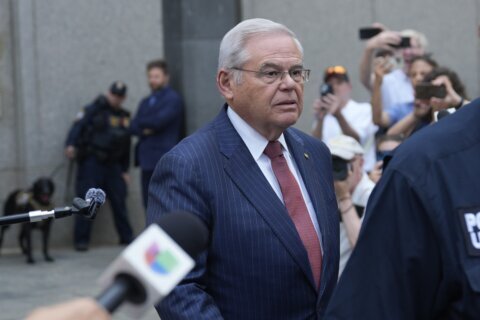When the 2-year Treasury yield eclipsed the 10-year Treasury yield on July 5, 2022, it caught many investors’ attention. The event — commonly dubbed a yield curve inversion — was largely viewed as a signal the U.S. economy would likely slip into recession in the near future.
An inverted yield curve occurs when short-term yields on U.S. Treasurys exceed long-term yields on Treasurys. Treasurys of different maturities can be compared, but the most common pairing is the 2-year with the 10-year.
Given the somewhat unpredictable time lag between when an inverted yield curve emerges and when a recession begins, the phrase “near future” may not mean much to some investors. The average time lag can span 12 to 24 months, according to the San Francisco Fed. Since 1978, the longest delay between a yield curve inversion and the start of a recession was 22 months, which occurred in 2006; the shortest lag time was six months back in August of 2019, according to Statista. The Federal Reserve Bank of New York estimates a 61% chance of a recession by January 2025.
It’s true the yield curve has accurately signaled almost every recession since 1955. Keen observers, however, will point to the lone exception, 1966, when the yield curve got it wrong.
For practical reasons, though, what many investors want to know is whether the current recession forecasts pass the proverbial “duck test.” On the surface, there’s little evidence the U.S. economy will soon waddle or wane.
[Sign up for stock news with our Invested newsletter.]
An Inverted Yield Curve, But a Strong Economy
For starters, in January, the U.S. Commerce Department estimated the real GDP, or gross domestic product, grew by 2.5% in 2023 — up from 1.9% GDP growth in 2022.
“The U.S. economy, I’d also argue, is structurally different than pre-COVID and is stronger now than in 2019, or even after the global financial crisis. There’s more demand than supply, whether you’re looking at the labor market or housing or retail spending, and this looks likely to persist for the next couple of years, which is why I wouldn’t anticipate a recession in 2024 or even 2025,” says Jared Franz, economist for the Capital Group.
For the first time in more than two years, optimism surpassed pessimism among U.S. CEOs, according to a February 2024 survey conducted by the Conference Board. The same survey revealed 32% of U.S. CEOs believe the U.S. economy is better than it was six months ago against 22% who said it was worse, and 39% of CEOs anticipate conditions will improve in their respective industries over the next six months.
“My general outlook on the U.S. economy in 2024 is cautiously optimistic. There are some encouraging signs in the health care end markets we serve that give me greater confidence regarding 2024, particularly compared to the uncertainty and unpredictability we saw in 2023,” says Marshall White, president and CEO of Team Technologies, a global, end-to-end health care manufacturing solutions provider of medical and dental products.
Emily Roland, co-chief investment strategist for John Hancock Investment Management, suggests the U.S. economy is buoyed by a low employment rate and massive deficit spending by the government. She adds, “This is highly unusual, as government spending has historically been counter-cyclical (policymakers use it when the economy is struggling to help it improve). According to the Congressional Budget Office, the deficit is expected to grow from 5.3% of GDP in 2023 to 6.1% of GDP in 2024 and 2025. Government spending may avert a recession or at least push it out significantly relative to a ‘classic’ cycle more driven from monetary policy.”
[15 Best Dividend Stocks to Buy for 2024]
Reasons to Be Concerned
Still, in the backdrop, consumers and corporations are feeling the squeeze from the Federal Reserve’s 11 rate hikes since March 2022. The Fed has pushed the benchmark overnight borrowing rate to a range between 5.25% and 5.5%, which is its highest level in 22 years.
Chris Diaz, co-head of fixed income at Brown Advisory, expects U.S. economic growth to slow materially over the next 12 months because of higher borrowing rates. Diaz adds, “Rates on credit cards, auto purchases and small business loans have significantly increased, and this will eventually pressure lower-income consumers.”
White also has reservations. “Interest rates and inflation stability continue to be top of the list of concerns as they impact so much of the economy where we operate,” White says.
Higher interest rates have nudged many investors to park excess cash on the sidelines. By the end of January 2024, the Investment Company Institute estimated institutional and retail investors held nearly $6 trillion in money market funds.
“(W)e think now is the time to get cash off the sidelines and reinvest following the volatility of the last few years. History tells us that investors don’t normally benefit from staying in cash at this point in the cycle,” Franz says.
Where to Invest
So, what are some thoughtful ways for investors to put money back to work? John Hancock’s Emily Roland suggests core bonds are attractive options to consider now.
“We see the ‘math’ on bonds as compelling into 2024. High-quality bonds (Treasurys, U.S. investment-grade bonds, municipal bonds, MBS) offer attractive yields compared to history, with the U.S. Aggregate Bond yield at 4.6%, below the recent peak but still the highest in over 10 years. In addition, value has been unlocked after the carnage for bond investors over the past several years, with the Aggregate Bond index trading at a significant discount to par at 90 cents on the dollar,” Roland says.
“U.S. Treasurys that mature between 3 to 5 years will provide attractive income and some price appreciation when the Fed begins to lower rates,” Diaz says.
Better still, despite any economic headwinds that may arise in the coming months, Northern Trust’s 2024 10-year return outlook is sanguine for a variety of asset classes:
| Asset class | 10-year annualized return forecast |
| Cash | 2.9% |
| U.S. investment-grade bonds | 4.7% |
| Global bonds | 3.7% |
| U.S. equities | 6.3% |
| Global equities | 6.3% |
| Natural resources | 7.9% |
| Listed real estate | 8.3% |
| Private equity | 9.6% |
These projections are encouraging for investors who cannot afford to duck for cover during the ebbs and flows of economic cycles and need to fund important financial goals — like the ability to retire on time.
More from U.S. News
7 Defensive Stocks for a Steady Return on Investment
8 Top Nancy Pelosi Stocks to Buy
7 Stocks That Outperform in a Recession
Inverted Yield Curve: Is it Still a Recession Indicator? originally appeared on usnews.com
Update 02/26/24: This story was previously published at an earlier date and has been updated with new information.







